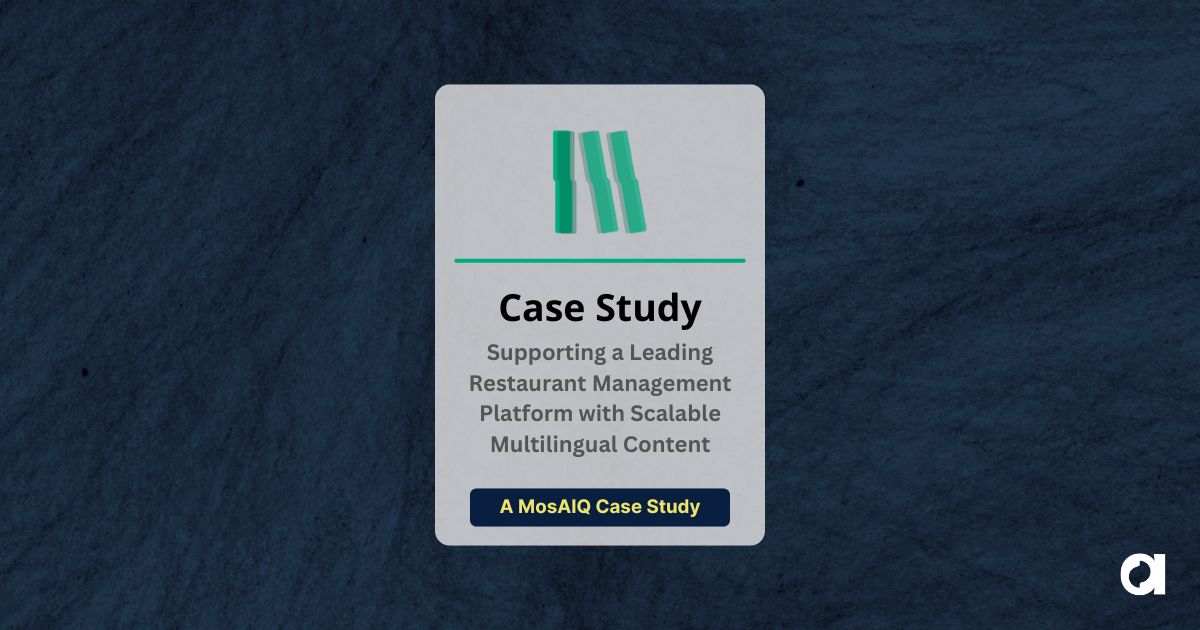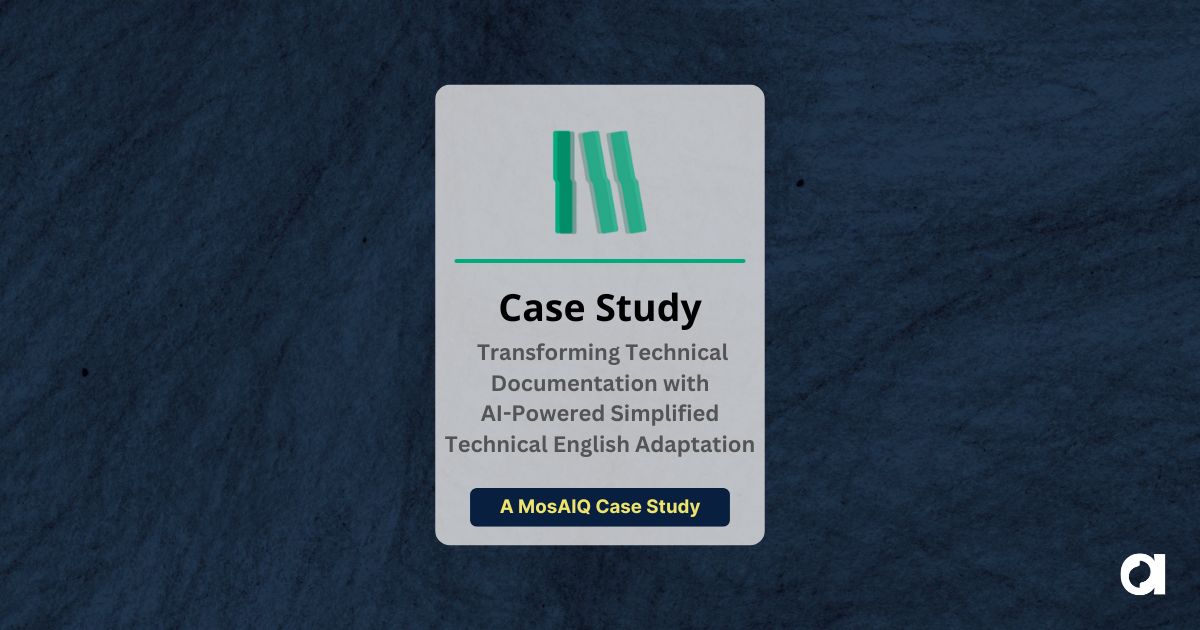From the flying cars in Blade Runner to the electric-powered technology in Black Panther, futuristic vehicles have fueled our imagination for decades. But today, electric vehicles (EVs) are no longer science fiction. They’re on the roads all around us, changing how we approach mobility and global transportation.
But delivering EVs to a global automotive market is far more than a technical exercise. Manufacturers must navigate a maze of regional regulations, adapt to diverse cultural norms, and ensure that every interaction—digital or physical—meets the expectations of local audiences. This is where localization comes into play.
The Right Stuff: What EVs Need to Succeed Globally
Today’s electric vehicles support entire ecosystems, integrating hardware, software, and user-facing content into a single seamless experience. Here are just a few of the components and elements where localization enables EVs to work with users worldwide:
Manuals Made for the Electric Age
We’ve talked about automotive manuals before, but EVs come with cutting-edge components, from high-voltage batteries and regenerative braking to advanced software integrations. That means they need specialized manuals for these technically complex components.
Emergency response guides must be customized for the safety regulations of each region and focus on protocols for handling battery fires and hazardous material leaks. Maintenance manuals, meanwhile, need to provide service technicians with precise instructions for recalibrating energy systems and diagnosing risks like thermal runaway, ensuring safe and reliable operation.
Charging Stations That Speak the Local Lingo
Charging stations are a critical point of contact with EV owners, where intuitive design and clear communication are essential. Localization ensures that interfaces, payment systems, and troubleshooting instructions are adapted to regional languages and cultural norms, enabling seamless use across global markets.
Accessibility laws amplify these demands. In the EU, multilingual and user-friendly designs are legally mandated, while in the U.S., the ADA requires tactile controls, screen reader compatibility, and ergonomic station layouts. Localization bridges these legal and practical requirements, ensuring stations function effectively for every user, in every region.
Localization for Navigation and Beyond
Modern EVs rely heavily on software for navigation, diagnostics, and energy management. These digital ecosystems need to not only work flawlessly but also adapt to local regulations, preferences, and languages.
For instance, navigation systems need localized maps and cultural landmarks, while energy apps must account for regional pricing and charging infrastructure. Localization ensures these systems feel intuitive and trustworthy, no matter where they’re used.
The Rules of the Road: Meeting Regulatory Standards
Global markets mean global regulations, each with its own priorities and complexities. Compliance isn’t optional—EV manufacturers must meet exacting standards for safety, emissions, and sustainability, or risk fines, delays, or market exclusion.
Cutting Through the EU’s Green Tape
The European Union leads the way in environmental regulation, enforcing strict standards on CO2 emissions and battery recycling. Meeting these requirements involves producing highly detailed documentation, from emissions testing data to lifecycle analysis reports.
Localization ensures these materials meet linguistic, technical, and legal standards across all 27 EU member states. Consistent terminology, formatting, and clarity are mandatory for regulatory approval.
Meeting U.S. Safety and Accessibility Standards
The U.S. regulatory landscape for EVs combines federal oversight with state-specific mandates, creating a patchwork of requirements. Federal Motor Vehicle Safety Standards (FMVSS) focus on crash safety and electronic systems, while state programs like California’s Zero-Emission Vehicle (ZEV) initiative impose stricter emissions and reporting obligations. This decentralized system demands different compliance strategies for each jurisdiction.
Accessibility laws, such as the Americans with Disabilities Act (ADA), also set the U.S. apart, requiring inclusive designs for charging stations, including tactile instructions, multilingual interfaces, and standardized layouts. Manufacturers must balance these mandates with the high litigation risks unique to the U.S., where non-compliance can result in costly lawsuits and recalls.
Navigating China’s Dual Credit System
China’s New Energy Vehicle (NEV) policies are a complex mix of incentives and penalties designed to accelerate EV adoption. Automakers must provide compliance reports on production quotas, emissions metrics, and energy efficiency.
Localization ensures these documents align with China’s technical standards and cultural expectations. Beyond regulatory compliance, it helps build brand trust with local consumers in one of the world’s largest EV markets.
The Right Track: Best Practices for EV Localization
EV manufacturers that want to succeed globally need localization strategies designed specifically for their industry’s unique challenges. Here are three best practices to ensure success:
Standardizing EV Terminology
In the EV industry, consistent terminology is essential for clarity, safety, and regulatory alignment. Glossaries tailored to EV-specific language ensure accurate and uniform translations for terms like “thermal runaway” or “state of charge,” reducing miscommunication in critical materials such as emergency response guides and maintenance manuals.
Meanwhile, translation memories offer translation reuse and higher consistency across large volumes of content, including frequent updates to user interfaces and technical documentation.
Customizing EV-Oriented Content for Global Markets
Electric vehicles rely on localization to address challenges unique to their advanced systems and global reach. Navigation tools, for example, must incorporate local maps and charging infrastructure details, including region-specific energy pricing and availability. Safety guides for high-voltage batteries must align with local regulations and terminology to ensure compliance and protect vehicle owners.
In-vehicle user interfaces pose another challenge, requiring adjustments for text expansion in languages like German or visual clarity in character-based scripts like Chinese.
These technical refinements make sure EV content not only works across diverse markets but feels intuitive and reliable to users everywhere.
Proactive Regulatory Alignment
Global compliance starts with localization that integrates regional expertise and consistent terminology management. By tailoring safety guides, emissions reports, and technical manuals for local legal standards, manufacturers can avoid approval delays and ensure smoother market entry. Clear, precise documentation reduces regulatory risks and builds trust with customers worldwide.
Adapting Localization to Evolving EV Demands
The localization needs of the EV industry are evolving with changing technologies and consumer priorities. Digital-first documentation like mobile-friendly user guides and interactive manuals is becoming the norm, replacing traditional formats. At the same time, sustainability messaging is now a focus, with content highlighting battery recycling and eco-friendly practices designed to resonate with different regional values.
Localized real-time updates are also gaining traction as EVs increasingly rely on software for navigation, diagnostics, and energy management. These updates provide region-specific information while complying with local privacy and regulatory standards, ensuring a seamless experience for drivers worldwide.
The Road Forward
The global expansion of electric vehicles comes with challenges, but localization turns these into opportunities. By creating multilingual content that meets regulatory standards, cultural expectations, and technological demands, manufacturers can ensure their vehicles comply with regional standards, create seamless user experiences, and build trust in global markets.
Argos Multilingual specializes in tackling the unique challenges of EV localization. Whether it’s adapting technical documentation, ensuring compliance, or aligning with regional markets, we’re here to help. Contact us today to drive your localization strategy forward.
 Argos Multilingual
6 min. read
Argos Multilingual
6 min. read
Keeping a global team on the same page is no small task. With employees spread across different locations, cultures, and time zones, internal communication needs to work for everyone—not just those who happen to speak the company’s primary language. The best internal comms don’t just inform; they connect. They build alignment, strengthen participation, and help […]

 Argos Multilingual
6 min. read
Argos Multilingual
6 min. read
For medical device manufacturers, expansion into some global markets can feel like venturing into uncharted territory. Unlike the well-established regulatory environments in the United States, United Kingdom, and European Union, these markets often require customized strategies to navigate their less-harmonized frameworks. While opportunities abound in Asia, Africa, South America, and the Middle East, each country […]











